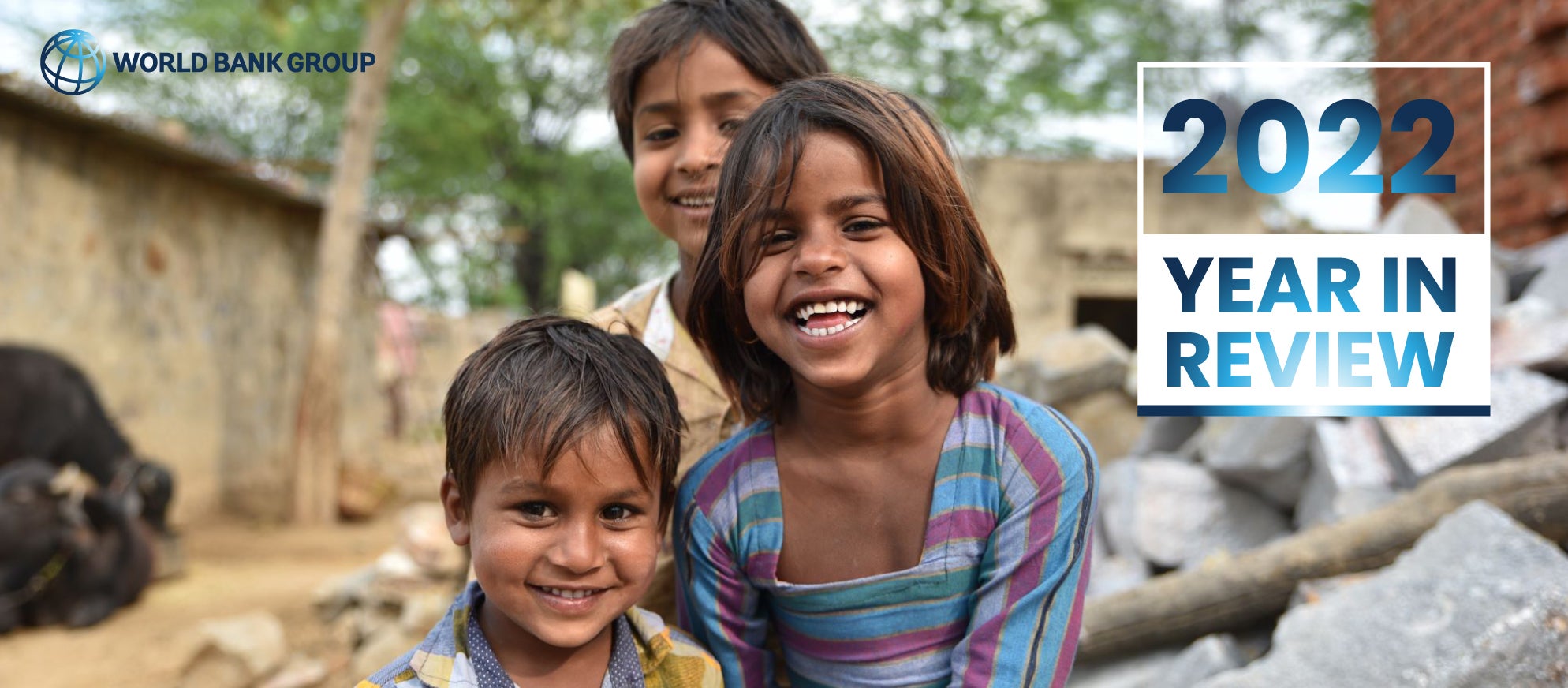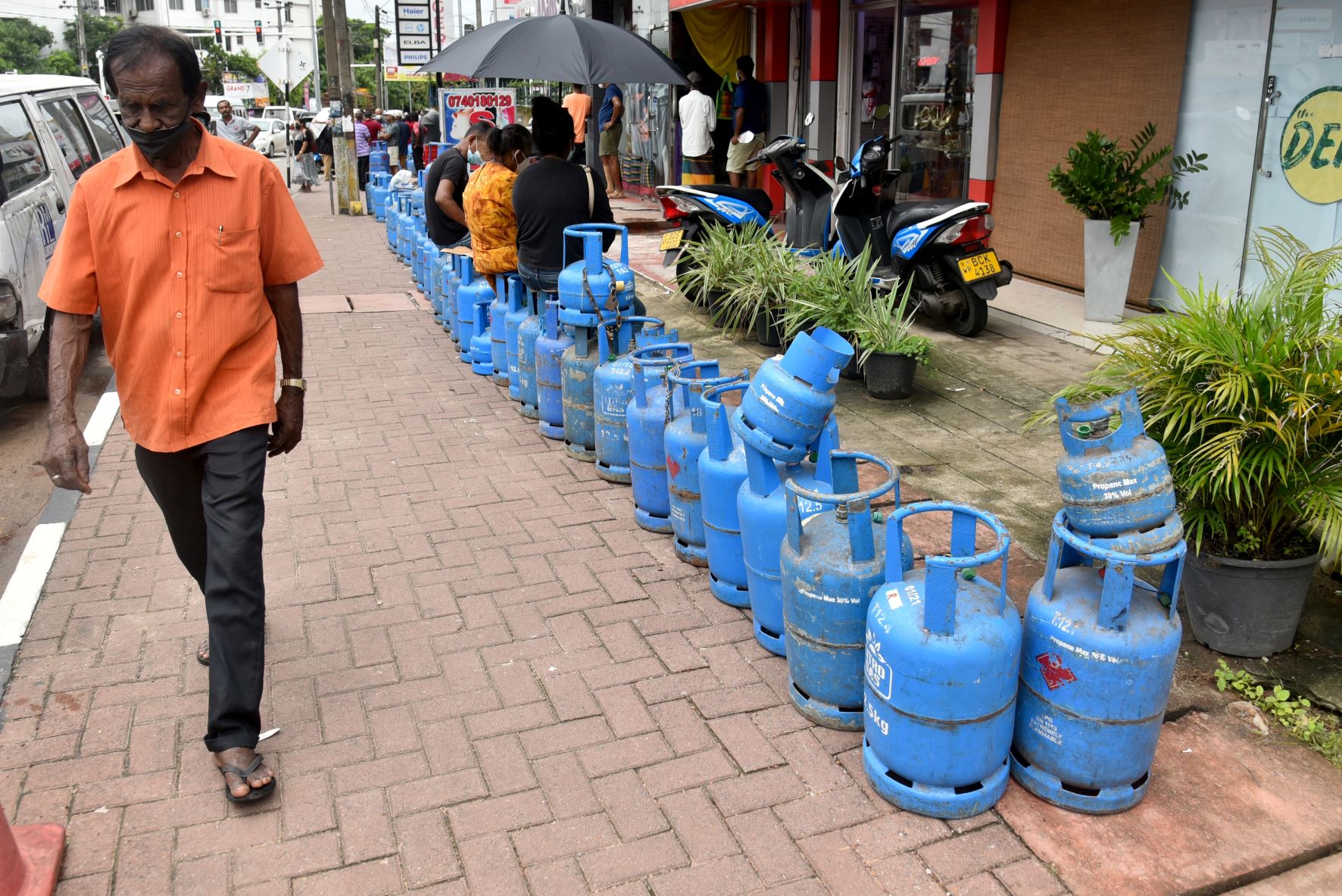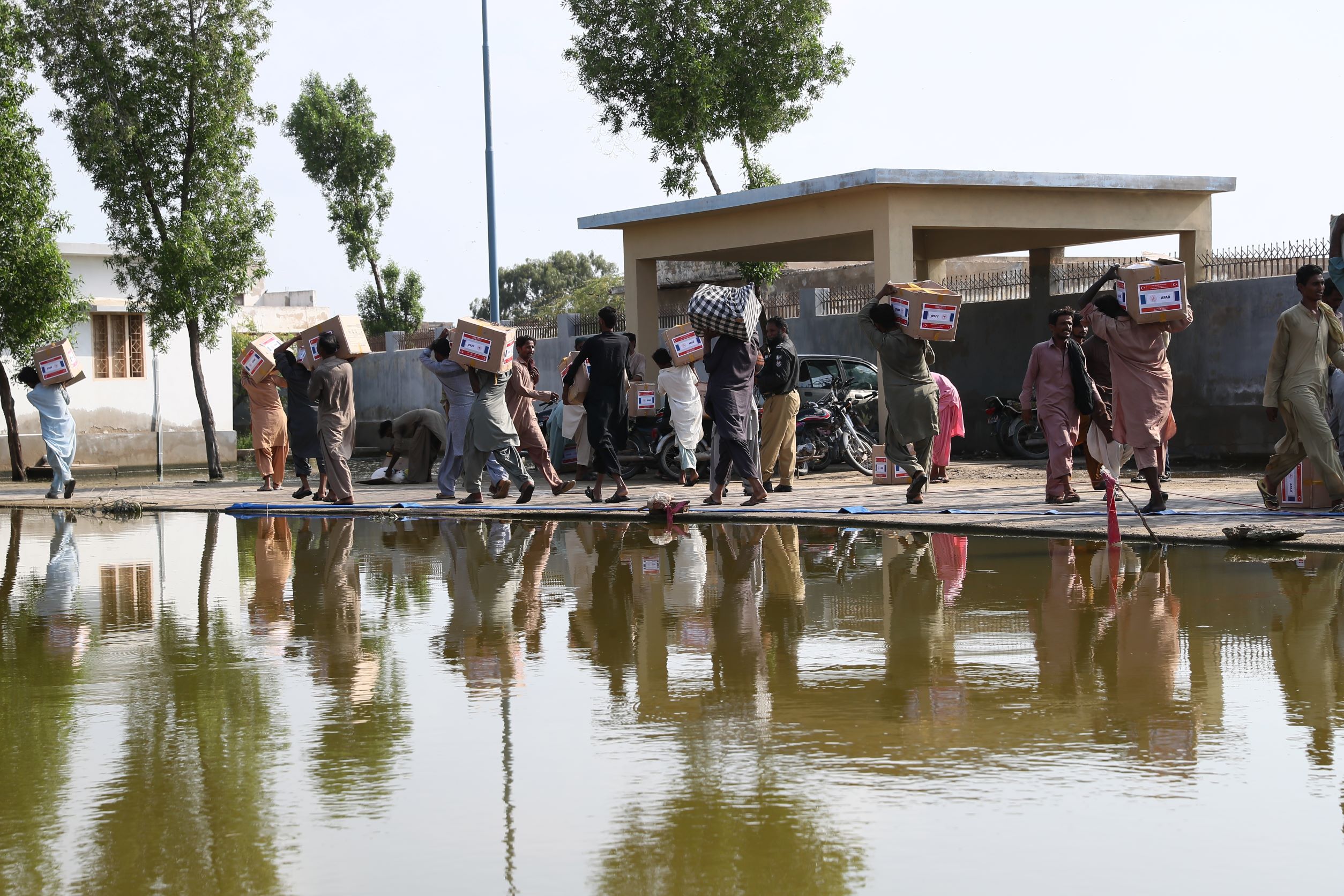 Picture of young Indian children smiling
Picture of young Indian children smiling
2022 was a tumultuous year of deep uncertainty brought on by multiple overlapping crises. South Asia was hit by a series of unprecedented shocks: economic crisis in Sri Lanka, catastrophic floods in Pakistan, a global slowdown, and impacts of the war in Ukraine on top of Afghanistan’s ongoing crisis, and the lingering scars of COVID-19. Our bloggers explored these issues, highlighting how the World Bank stepped up its support to help the people of South Asia. They also wrote about a range of other development priorities in the region such as building resilience in the face of increasing climate risk, strengthening regional cooperation and connectivity, empowering women, and curbing deadly air pollution. Here’s a look back at the year in 10 blogs.
South Asia’s policy balancing act: Managing economic growth amid global shocks
As South Asian countries manage the scars of COVID-19 amid a series of other shocks-devastating floods in Pakistan, skyrocketing commodity prices, tightening monetary policies by advanced countries, and the global economic slowdown- they face competing priorities. How can they mitigate the adverse impacts of these historic events while also crafting carefully calibrated policies to combat inflation and manage fiscal pressures? Find out in Zoe Leiyu Xie and Xiao’ou Zhu’s blog on our latest regional economic update.
In Bangladesh, an urgent call for clean air
Air pollution is a major public health crisis in South Asia. According to a recent World Bank study on Bangladesh, it caused between 78,145 and 88,229 deaths in the country in 2019. In Dhaka, heavy traffic, construction, and brick kilns are major sources of air pollution, exposure to which impacts physical and mental health. Mitigating the crisis requires a collective effort from Bangladesh’s government through policy reforms and initiatives aimed at improving health services, strengthening early warning systems to minimize exposure to bad air, and conducting research on air pollution. Wameq Azfar Raza and Iffat Mahmud discuss the report’s findings in this blog post.
Navigating the Storm: Signs of resilience in Afghanistan’s private sector
How did the political crisis of August 2021 impact Afghanistan’s private sector? The government’s collapse disrupted the functioning of institutions, threw the financial sector into crisis, and largely cut off the flow of foreign aid. The resulting economic shock interrupted the delivery of basic services, further compromising the private sector’s ability to help create jobs. Mohammad Sulaiman Akbari writes about two World Bank surveys that show that Afghanistan’s private sector remains resilient and could be a more significant driver of growth.
Resilience: Sri Lanka’s strength to navigate an uncertain future
Sri Lanka was on its way to eliminating extreme poverty until COVID-19 and this year’s economic crisis threw it into disarray. Today, ordinary Sri Lankans all over the country face extraordinary challenges to make ends meet. On End Poverty Day 2022, Faris Hadad-Zervos wrote about Sri Lanka’s economic crisis, and how it is an opportunity to commit to and implement a solid and credible fiscal and structural reform program to get the country back on a sustainable and inclusive growth path.
Pakistan’s floods are deepening its learning crisis
Pakistan experienced its worst-ever floods this year. Heavy monsoon rains, about 6 times the average of the last 30 years, submerged a third of the country, affecting over 33 million people. Initial assessments indicate that more than 24,000 schools were damaged or destroyed across the country, disrupting schooling for an estimated 3.5 million children. This devastation compounds Pakistan’s learning crisis and is expected to worsen its Learning Poverty. Rebuilding its education system will require coordinated effort, resources, and the smart sequencing of interventions, write Jaime Saavedra and Lynne Sherburne-Benz.
In South Asia, climate change is not an abstract concept; it is happening now, and fast. Investing in climate resilience is an urgent priority, writes Martin Raiser. This requires strengthening the systemic resilience of rural landscapes including food, fresh water, and forest systems to boost adaptation to a changing climate, livelihoods, and food security. It also requires building climate-resilient cities and infrastructure, and a people-centric approach to strengthen community resilience through early warning systems and shock-responsive safety nets. Read more here.
What will it take to connect the Bangladesh, Bhutan, India, Nepal (BBIN) sub-region?
Did you know that it is about 15-20 percent cheaper for an Indian company to trade with Brazil or Germany than with adjoining Bangladesh? As a result, regional trade in South Asia has barely scratched the surface of its potential. Although trade between Bangladesh, Bhutan, India, and Nepal (BBIN) grew six-fold between 2005 and 2019, the unexploited potential remains massive, estimated at 93 percent for Bangladesh, 50 percent for India, and 76 percent for Nepal. Find out how these countries can improve trade and connectivity in Shomik Mehndiratta and Erik Nora’s blog on a World Bank report.
The changing face of tourism and work: How Maldives is successfully adapting to the pandemic
While COVID-19 restrictions hit all South Asian countries dependent on tourism hard, leading to a deep contraction in GDP in 2020, Maldives has been exemplary in its resilience and ability to recover . In 2021, visitor arrivals reached more than 80 percent of pre-COVID levels, far outpacing other similar tourist destinations. What lessons can other countries learn from Maldives’ recovery in the tourism sector? Valerie Mercer-Blackman reflects on the findings of Shifting Gears: Digitization and Services-Led Development.
Beti Kamao: Empowering India’s micro-level women entrepreneurs
Empowering women entrepreneurs is an economic priority that will bring considerable benefits to India’s economy. India’s women own up to 15.7 million businesses- 20 percent of the country’s enterprises. With adequate support, these enterprises could increase significantly, creating up to 170 million jobs. But to achieve this, micro-level women entrepreneurs will need to better manage their businesses, find ways to reach wider markets, and obtain easier access to finance. Tushar Arora, Karthik Laxman, and Sharmista Appaya explain how a World Bank-supported pilot is helping.
Towards green, resilient, and inclusive agriculture development in Nepal
Meet Manika Gurung, a 31 year-old mother of two in Barpak, Nepal, who has been able to make earn more money growing vegetables thanks to the World Bank-financed Food and Nutrition Security Enhancement Project (FANSEP). FANSEP is being implemented in eight remote and vulnerable districts in Nepal’s Madhesh and Bagmati provinces and aims to enhance climate resilience and improve agricultural productivity and nutrition practices of 65,000 targeted smallholder farming households. Read more about it in Karishma Wasti’s blog.





Join the Conversation